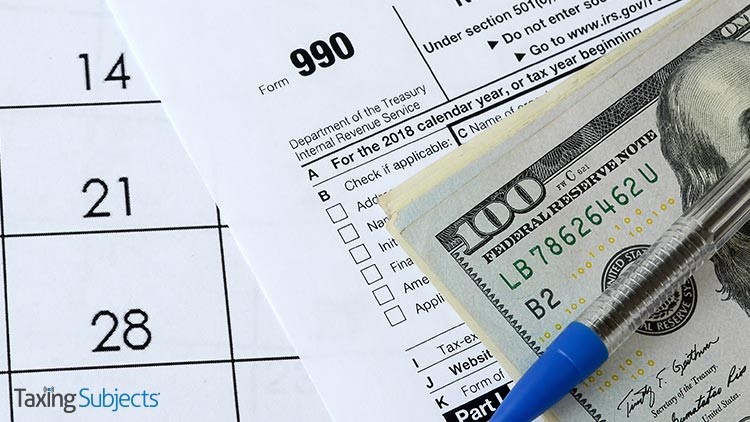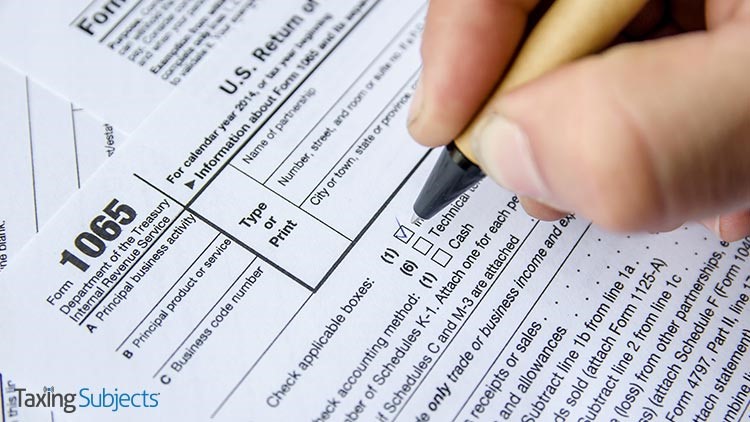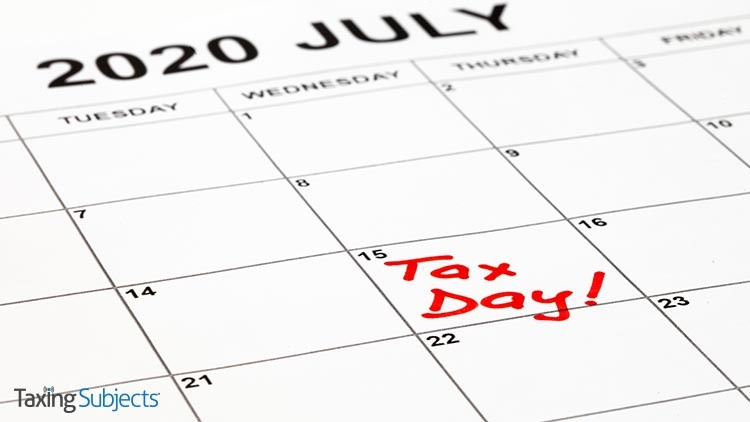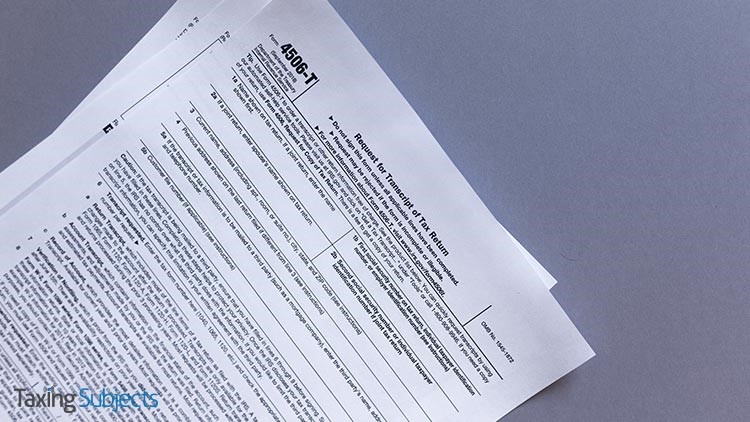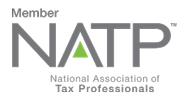by | Jul 18, 2020 | Tax Tips and News
The IRS announced relief for meeting Community Health Needs Assessments requirements.
The IRS has some good news for tax-exempt hospitals feeling overwhelmed by the COVID-19 pandemic. In a recent press release, the agency says that it is once again moving the deadline for Community Health Needs Assessments.
Initially moved from April 1 to July 15, the IRS is now pushing the CHNA deadline to December 31, 2020. This development comes as coronavirus cases are surging across the country, hopefully providing affected hospitals the time they need to maintain their tax-exempt status.
Community Health Needs Assessments are one requirement for hospitals to establish and maintain their tax-exempt status. According to the IRS press release, that means “conducting a CHNA and adopting an implementation strategy to meet the community health needs identified through the CHNA”–which must now be completed before the new December 31 deadline. But what does that look like on the tax side of things?
“Tax-exempt hospital organizations filing Forms 990 must indicate on Schedule H if they have conducted a CHNA in the current taxable year or in either of the two immediately preceding taxable years and if they have adopted an implementation strategy to meet the significant health needs identified through the most recently completed CHNA,” the IRS explains. In addition to putting the hospital’s tax-exempt status in jeopardy, it can come with a $50,000 tax “for each hospital facility that fails to meet either or both of these requirements.”
The IRS says hospitals that decide to take advantage of the new deadline “should state in the narrative of Part V.C. of Schedule H (Form 990) that they are eligible for and are relying on the relief provided in [Notice 2020-56].”
The “Coronavirus Tax Relief and Economic Impact Payments” page on IRS.gov contains information about other tax relief provided as a result of the pandemic.
Source: IR-2020-156
– Story provided by TaxingSubjects.com
by | Jul 17, 2020 | Tax Tips and News
The Internal Revenue Service, along with the U.S. Treasury Department, has released a draft version of a proposed new-and-improved partnership form for tax year 2021. The aim is to provide “greater clarity for partners on how to compute their U.S. income tax liability,” especially in areas where international tax is relevant, including claiming deductions and credits.
The redesigned form and its instructions provide guidance to partnerships on just how to report international tax information to their partners in a standardized way. The revised form would apply to a partnership that’s required to file Form 1065 only if the partnership has items of international tax relevancy — usually foreign activities or foreign partners.
The proposed changes won’t come into play for domestic partnerships with no international tax items to report.
The IRS is seeking comments on the draft Schedule K-2.
The IRS says this early release is intended to afford time for stakeholder input and engagement. Treasury and IRS are inviting comments from affected stakeholders through Sept. 14, 2020. Written comments should be sent to the following email address: lbi.passthrough.international.form.changes@irs.gov with the subject line: “International Form Changes.”
The Treasury Department and the IRS will be “actively engaged” with stakeholders to solicit input on the proposed changes before the forms are finalized later this year.
At present, partners are required to report international tax information, but on several different tax forms and schedules. Partners generally get the information to be reported from their partnerships, usually in narrative statements attached to a K-1. Those statements are compiled in a variety of formats and may be difficult for partners to translate into their own returns.
The proposed changes seek to ease the burden using a standard format offering greater clarity to partners and partnerships alike.
What are the changes in the draft Schedule K-2?
IRS and Treasury intend to release the new draft Schedule K-2, Partners’ Distributive Share Items – International and Schedule K-3 (Form 1065), Partner’s – Share of Income, deductions, Credits, etc. – International, both for tax year 2021 (filing season 2022), and the draft instructions, to allow partnerships and other stakeholders time to consider the proposed changes and to provide comments that will be taken into account in finalizing the schedules and instructions.
The proposed parts included in new Schedule K-2 (Form 1065) replace portions of existing Form 1065, Schedule K, lines 16(a) through 16(r). The proposed schedule provides for international tax information to be reported in a standardized manner generally corresponding to the tax forms already listed.
The proposed parts included in the new Schedule K-3 (Form 1065) replaces portions of Schedule K-1, Part III, Boxes 16 and 20, and provides information to the partner generally in the format of these forms that might be completed by the partner:
- Form 1040, U.S. Individual Income Tax Return;
- Form 1040-NR, U.S. Nonresident Alien Income Tax Return;
- Form 1116, Foreign Tax Credit (Individual, Estate, or Trust);
- Form 1118, Foreign Tax Credit – Corporations;
- Form 1120, U.S. Corporation Income Tax Return;
- Form 1120-F, U.S. Income Tax Return of a Foreign Corporation;
- Form 4797, Sales of Business Property;
- Form 8949, Sales and Other Dispositions of Capital Assets;
- Form 8991, Tax on Base Erosion Payments of Taxpayers with Substantial Gross Receipts;
- Form 8992, U.S. Shareholder Calculation of Global Intangible Low-Taxed Income (GILTI); and
- Form 8993, Section 250 Deduction for Foreign Derived Intangible Income (FDII) and Global Intangible Low-Taxed Income (GILTI).
The Treasury Department and the IRS plan similar revisions, where they apply, to Form 1120-S (U.S. Income Tax Return for an S Corporation) and Form 8865 (Return of U.S. Persons with Respect to Certain Foreign Partnerships). Comments are welcomed on similar changes to be made to Forms 1120-S and 8865 for the 2021 tax year.
– Story provided by TaxingSubjects.com
by | Jul 17, 2020 | Tax Tips and News
Tax professionals across the country wrapped up a unique filing yesterday. While some still have to contend with an imposing stack of extensions that will be due on October 15, many are making plans to prepare for next filing season. It turns out that you should make room for another item on that checklist: paying the new Paid Tax Identification Number fee.
The Internal Revenue Service announced the resumption of annual PTIN fees for 2021 yesterday afternoon in a press release. The final regulations—titled “Preparer Tax Identification Number User Fee Update”—will officially publish in the Federal Register tomorrow. That means that the agency’s estimated 800,000 preparers will need to make room in their budget when applying for or renewing a PTIN.
How much is the new PTIN user fee?
The IRS says that PTINs will require a $21 application fee and $14.95 contractor fee for every new application or renewal. Since not having a PTIN means facing IRS penalties, tax professionals are incentivized to meet the December 31, 2020 deadline.
After a few years of not being required to pay, it’s only natural to wonder why there’s been a change. Here are a couple reasons:
- We noted in April that PTIN user fees initially went away in 2017 due to a DC District Court because of a legal challenge. That decision was overturned by the DC District Court of Appeals in 2019.
- The IRS is given the authority to charge the PTIN fee by the Independent Offices Appropriations Act of 1952, and the Office of Management and Budget places limits on those fees.
“The IRS is required (PDF) to conduct a biennial review of the PTIN user fee,” the IRS says in yesterday’s press release. “The agency determined that the full cost to administer the PTIN program going forward is $21 per application or renewal. This amount includes costs relating to PTIN misuse and maintaining the integrity of PTINs. The third-party contractor fee, $14.95, pays for several functions including processing applications, renewals and operating a call center.”
How do I apply for a PTIN?
The IRS says tax professionals have two options to apply for or renew a PTIN:
- Apply online at IRS.gov.
- Complete and file Form W-12.
To review the PTIN application process, visit the “PTIN Requirements for Tax Return Preparers” page on IRS.gov.
Source: IR-2020-159
– Story provided by TaxingSubjects.com
by | Jul 15, 2020 | Tax Tips and News
This time it’s for real.
The income tax filing and payment deadline has finally come around. Pushed back from its normal April 15 slot because of the COVID-19 pandemic, the deadline means it’s finally time to get the job done.
With the deadline pushed back to give practitioners and their taxpayers an extra three months to file and pay any tax due, one might think that everyone would have their returns filed by now. But some experts say they expect July 15 to be more like April 15 — only later.
At any rate, we thought a quick rundown of some available resources might make deadline day a little less hectic for everyone.
How do clients avoid the paper chase?
Tax pros have a big advantage when it comes to filing taxes. Unlike taxpayers who have to sweat through all the forms and jargon and then mail in their income tax return, professionals file taxes electronically, making the transmission of the return nearly instantaneous. Paper returns come with some significant drawbacks.
The IRS is experiencing delays in processing paper tax returns because they’re understaffed thanks to the pandemic’s effects. In addition, taxpayers who filed a paper return and expect a refund could see a delay in receiving their refund—as much as an extra four to six weeks from the time the return was mailed.
The IRS says it processes paper returns in the order they are received. If taxpayers have filed a paper return and their refund is delayed, they should not file the same return again or call the IRS.
Even with the delayed tax filing deadline, extensions can be obtained that push the filing deadline all the way to Oct. 15. There are two best ways to get an extension:
The automatic extension of time to file will process when taxpayers pay all or part of their taxes, electronically, by the July 15 due date. An extension to file is not an extension to pay. Taxes are still due by July 15.
Clients can pay easier electronically.
While a tax professional can get taxes filed quickly and easily, any tax due is the taxpayer’s responsibility. But the IRS has come up with a number of options so that even this once onerous obligation is easier than ever before.
Taxpayers can pay online, by phone, or with their mobile devices using the IRS2Go app. If they use a tax preparer, they should ask the tax pro to make the tax payment through an electronic funds withdrawal from a bank account. There are, however, other options available:
- IRS Direct Pay allows taxpayers to pay online directly from a checking or savings account for free, and to schedule payments up to 365 days in advance.
- Taxpayers can choose to pay with a credit card, debit card or digital wallet option through a payment processor. The payment processor adds a fee; no fees go to the IRS.
- The IRS2Go app provides the mobile-friendly payment options, including Direct Pay and through payment providers.
- Taxpayers may also enroll in the Electronic Federal Tax Payment System and have a choice of paying online or by phone by using the EFTPS Voice Response System.
Should clients set up an installment plan?
Qualified taxpayers can choose to pay any tax owed over time through an installment agreement with the IRS. An online payment plan can be set up in a matter of minutes. Taxpayers should be aware that interest and late-payment penalties will continue to accrue after July 15.
Here, too, there are options. The taxpayer’s specific tax situation will determine which payment option is available, either a short-term payment plan of 120-days or less, or a long-term payment plan that runs more than 120 days.
For information about their federal tax account, taxpayers can visit IRS.gov/account. There they can view the amount they owe, access their tax records online, review their payment history and see key tax-return information for the most recent tax return as it was originally filed.
– Story provided by TaxingSubjects.com
by | Jul 12, 2020 | Tax Tips and News
The IRS has been steadily working through its IVES backlog.
Here’s some good news for a change: The Internal Revenue Service today issued an IVES Program update announcing that the Income Verification Express Services (IVES) will start accepting new submissions on Tuesday, July 14, 2020. That means tax professionals who need to submit a stack of Forms 4506-T don’t have much longer to wait.
The IRS announcement notes that they have been working diligently on finishing the backlog created when coronavirus concerns led to employees being sent home. While the IRS is about to fling open the doors to IVES, the newsletter passes along some important tips for anyone about to send in new transcript requests.
How do I get my submissions processed as quickly as possible?
“If you are sending your oldest inventory first, please ensure the taxpayers’ signatures meet the 120-day requirement,” the IRS advises. “We will be sending acknowledgements out to confirm the work we have received from you, so do not send us duplicate requests.”
The IRS also says that it’s important to fax documents to the IVES processing site designated for your area. Here are the fax numbers provided in the update:
Fax number | Site | |
(844) 249-6238 | Austin | |
(844) 249-6239 | Fresno | |
(844) 249-8128 | Kansas City | |
(844) 249-8129 | Ogden | |
While following these tips should help keep new requests moving along, the IRS cautions that tax pros need to temper their expectations.
“We want to remind you that we still have limited staffing, so processing time will be delayed,” the IRS explains. “Please know that we are aware of the urgency to accept additional work, and we’re working hard to restore full service to you while also protecting our employees.”
Source: IVES Program e-News and Updates (July 10, 2020)
– Story provided by TaxingSubjects.com
